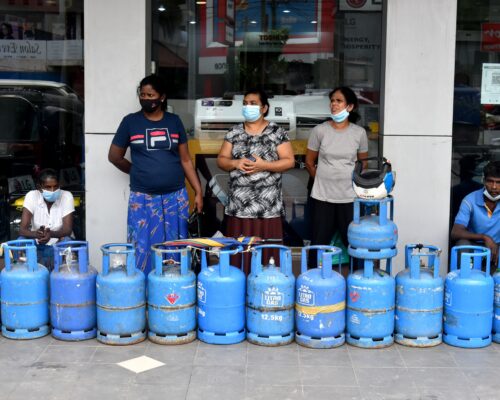A Bumpy Road Ahead for Malaysia’s Net-zero 2050 Ambitions
Photo YuriAbas / Shutterstock.com
19 September 2023 – by Heba Hashem
Malaysia’s net-zero emissions goals are closer to becoming a reality following the launch of its National Energy Transition Roadmap in July. The masterplan comes months after the government raised its renewable energy target to 70% of the electricity mix by 2050.
This is more than double the current installed capacity of 25% and will require around USD 143 billion in investments.
Kian Min Low, chief renewables officer at Malaysian clean energy company Gentari believes the targets are realistic given the continued decline of renewable-energy generation costs.
“The trajectory is definitely upwards. The region is demanding that we go towards the greener side of the energy equation,” Gentari said in a podcast interview with Energy Tracker Asia.
A subsidiary of Malaysia’s state oil-company Petronas, Gentari was established in 2022 to develop renewables, hydrogen and green mobility solutions. The company is active in Malaysia, India and Australia and is exploring collaborations in Singapore.
“Southeast Asia is a significant consumer of energy and therefore, they will need to decarbonise for the world to reach net zero. What we have here is the renewable energy resource, and the challenge is the exploitation of those resources.”
A Net-Zero Greenhouse Gas Emissions Nation and Global Warming
Despite contributing 0.8% to global greenhouse gas emissions, Malaysia has committed to achieving net zero by 2050. As part of this plan, the country will establish five large-scale solar power parks, each with a capacity of 100 MW. It will also set up an exchange hub for renewable energy cross-border trading.
Other key projects include 4.5 MW of rooftop solar across residential buildings, and 2.5 GW of hybrid hydro-floating solar PV at existing hydro dams. There are also plans to install 10,000 EV charging stations by 2025 and to build three green-hydrogen production plants.
Furthermore, Malaysia intends to phase out its coal-fired power plants by 2045 and to stop building new coal assets. This is a significant commitment considering that the country burns more coal today than it did two decades ago. To achieve carbon neutrality, Malaysia has to reduce its carbon footprint and increase energy efficiency.
In 2022, Malaysia generated 44% of its electricity using the most polluting fossil fuel. This explains why electricity generation contributes around 54% of the country’s carbon dioxide emissions.
Is Malaysia on Track to Reach its Net-Zero Target by 2050?
All in all, Malaysia’s energy transition roadmap outlines 10 flagship projects and 50 initiatives. Through these carbon reduction efforts, the country expects to reduce its GHG emissions by more than 10,000 Gg CO2eq per year. It also expects to reduce its fossil-fuel reliance from 96% in 2023 to 77% in 2050.
To get these projects off the ground, the government plans to establish a USD 430 million seed fund. Specifically, the fund aims to provide financial resources to projects that would otherwise yield below-market returns.
However, the seed capital is a fraction of the USD 277.96 billion (RM 1.3 trillion) that Malaysia needs to invest by 2050 for its energy transition. Moreover, the rising interest rates will make it harder and more expensive to secure clean energy finance, according to Low.
“In terms of financing, clearly the world has benefited significantly from the low interest rate environment in the last decade or so. Presently, with the rising interest rates, that does present a significant challenge in terms of trying to get renewable energy costs to a lower number.
“The region and Malaysia would benefit from accelerating the rollout of green financing. “The market has sort of explored the issuance of green bonds to try and achieve a lower financing cost for renewable energy. I think that effort needs to continue.”
Challenges of Achieving Net-Zero Carbon Emissions by 2050 in Malaysia
Financing is not the only hurdle facing Malaysia’s energy transition. The country remains heavily dependent on fossil fuels for its surging energy demand. Additionally, as the second-largest oil and natural gas producer in Southeast Asia and the fifth largest LNG exporter in the world, Malaysia has long relied on its fossil-fuel sector for economic growth.
However, the country’s petroleum reserves for oil and gas resources are projected to last for only 15 years. At the same time, increasing hydrocarbon production has become difficult in recent years. This is due to maturing oil fields and a lack of developed new fields.
As Malaysia transitions to cleaner energy, Low expects gas to remain as a transition fuel. The government has already stated in its roadmap that natural gas is set to be a transitional fuel. Not only that, but it will also be the main contributor of total primary energy supply at 56%.
“Gas is still the most transportable form of energy for energy generation, that is, on the cleaner side of the equation. So, we see that for the short and medium term. Going forward, we’re exploring hydrogen as a way to supply power that is potentially deliverable on a 24/7 basis.”
Fossil-Fuel Subsidies Hampering Malaysia’s Net-Zero Progress
Meanwhile, government support for the oil and gas sector is another issue hampering Malaysia’s net-zero objectives. According to the central bank, the country spends 12% of its GDP on fossil fuel subsidies.
In fact, Malaysia has the highest petrol subsidy-to-total government spending ratio in ASEAN, at roughly 32.9%. This is considerably higher than the world average of 8.1%. Fossil fuel subsidies discourage the adoption of renewable energies and widen fiscal deficits in developing economies. Redirecting such subsidies to renewables would go a long way in driving the clean-energy transition.
“The energy transition is going to be a very expensive exercise for the world. At the end of the day, [it] will either be paid for by the consumers or the taxpayers. For us to embark on this net-zero journey, there has to be a delivery of a subsidy to be able to make some of these new energies work,” explained Low.
He pointed to the example of green hydrogen, which has big potential but is far more expensive to produce than grey or blue hydrogen.
“You can compare that to how wind and solar energy started almost 20 years ago. They were very expensive to begin with. And the scale they got to was driven initially, significantly, by the availability of subsidies in Europe. So, I think we [will] see a similar situation playing out in the newer greener fields.”





